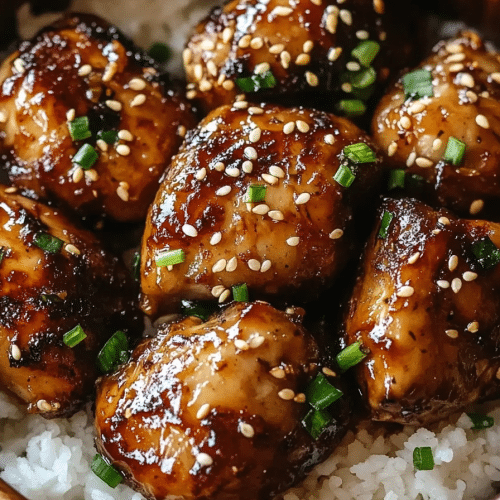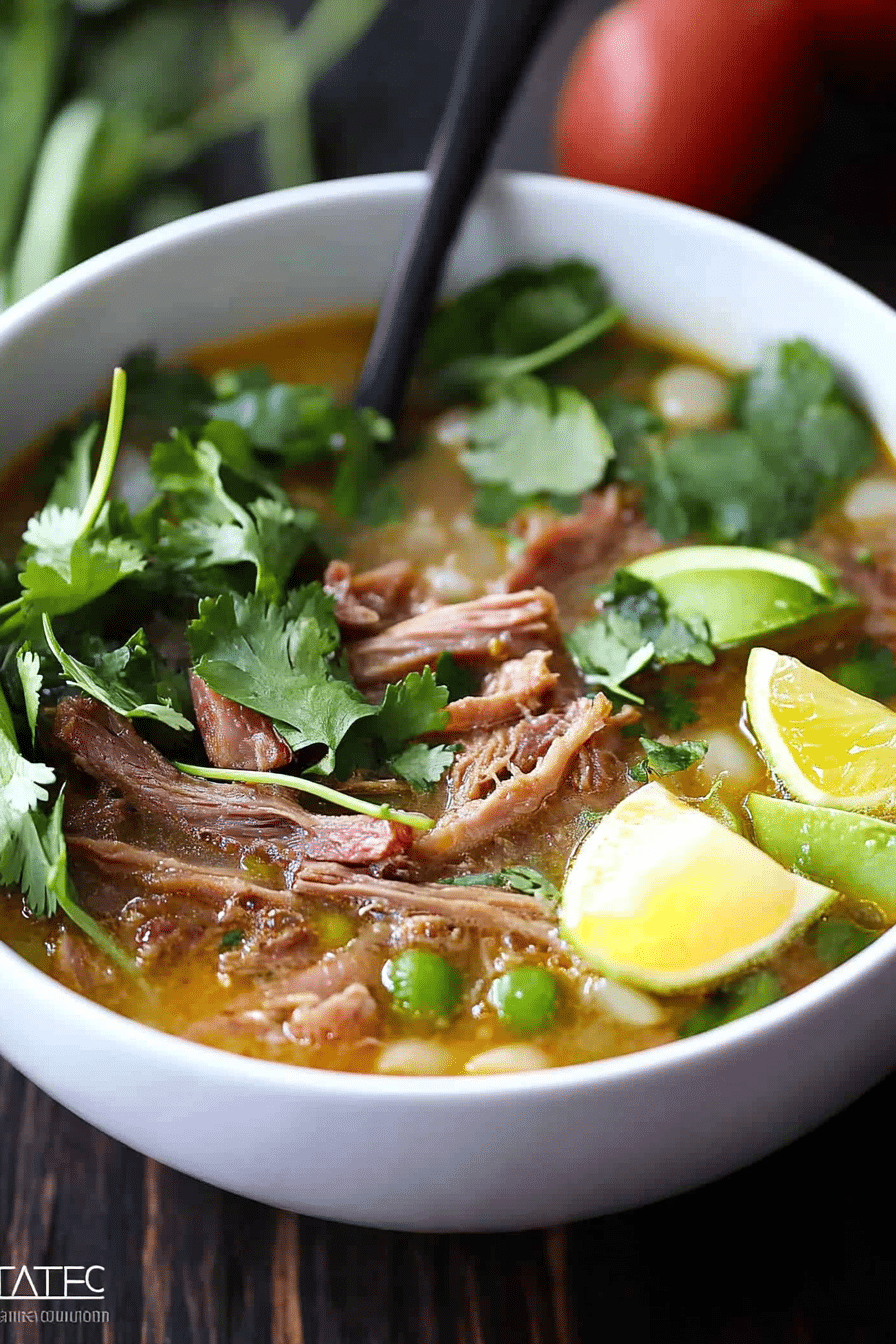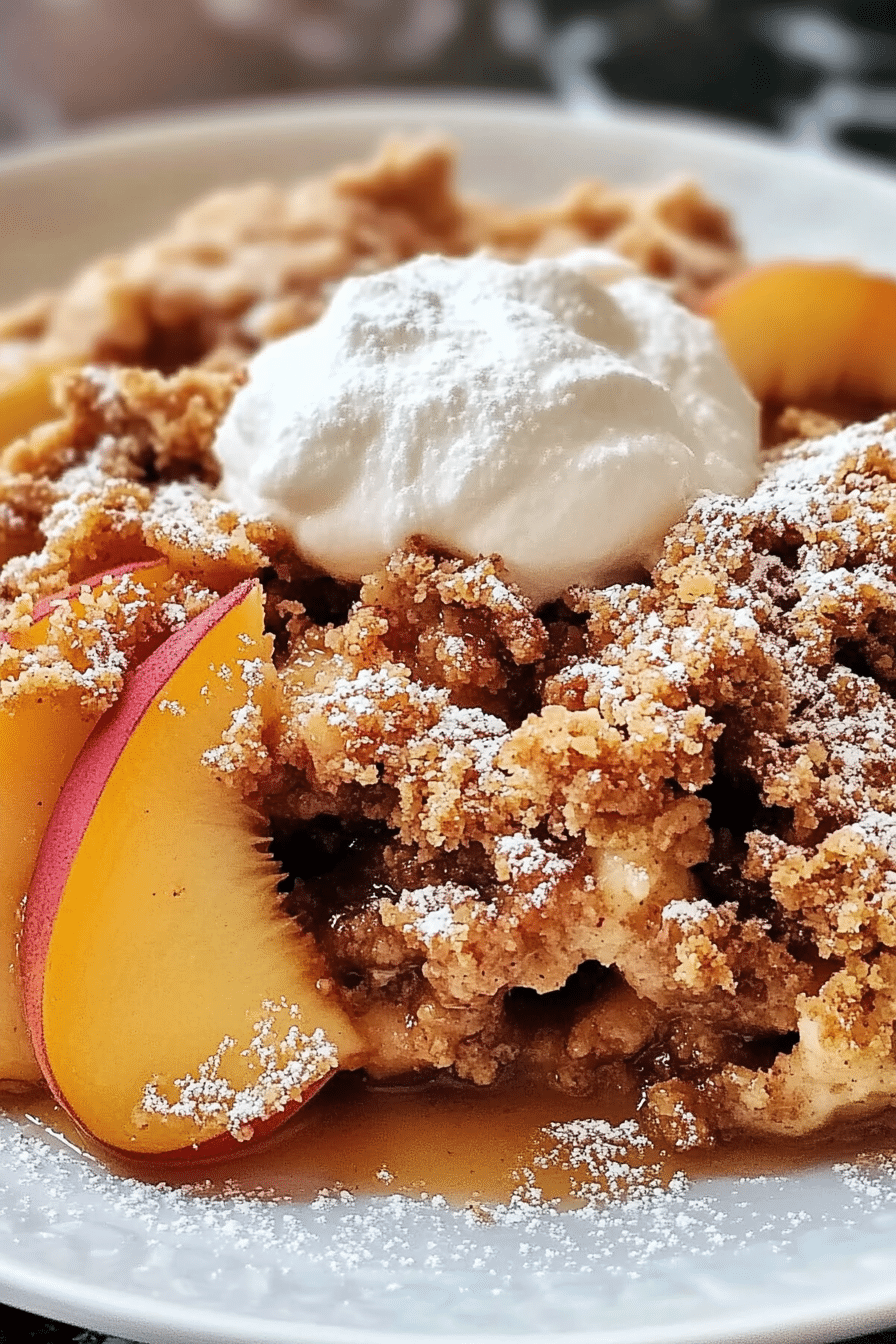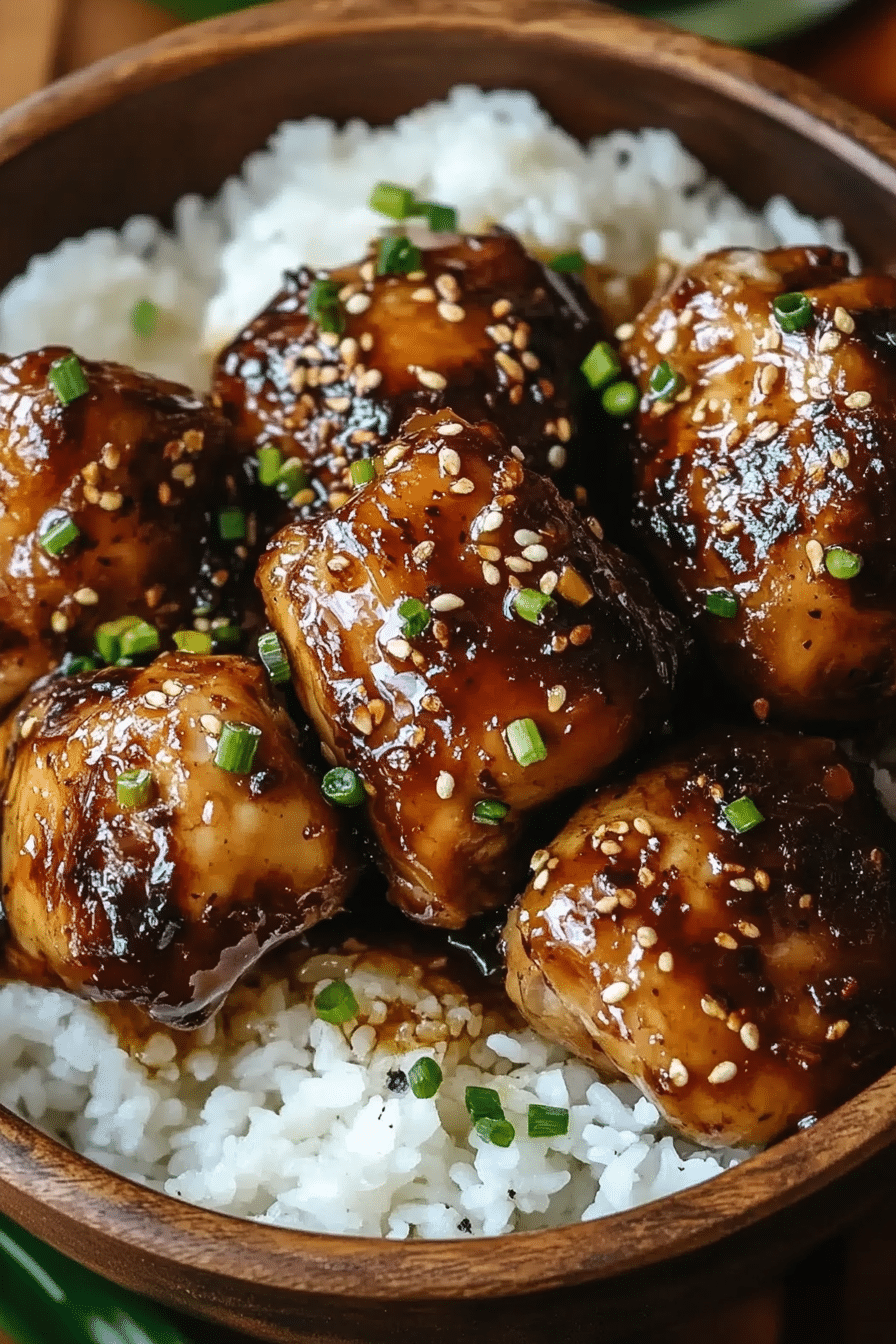The kitchen smells like a memory you can taste—garlic softening in oil, a tangy kiss of vinegar, and a warm splash of soy that makes the room feel cozy even on a rainy evening. This is Filipino Chicken Adobo, the kind of dish that invites everyone to the table and somehow makes a weeknight feel like a celebration. I learned to cook this the first time my grandmother slid a battered pot onto the stove and whispered, “Just trust the sauce.” Since then, I’ve made Filipino Chicken Adobo countless times, and it never fails to bring the family together. If you’ve ever compared it to a simple braise, you’re not wrong—adobo is braise and personality all at once. It’s incredibly forgiving, deeply comforting, and—honestly—this one’s a lifesaver on busy nights. The smell alone can coax a fussy eater to the table, and the flavor? Pure, honest, homey magic. I always say: a pot of Filipino Chicken Adobo tastes better the second day, so don’t rush the leftovers.
Thank you for reading this post, don't forget to subscribe!What is Filipino chicken adobo?
Think of Filipino Chicken Adobo as a practical, pantry-friendly hug in a pot. It’s essentially chicken simmered in a punchy, salty-sour marinade—soy sauce, vinegar, lots of garlic, bay leaves, and peppercorns—until the meat is tender and the sauce coats every piece with glossy depth. The name “adobo” comes from a cooking style that preserves and braises using vinegar and spices; Filipino adobo is the most famous take on that method. It’s comfort food with an edge of tang, and it works beautifully with simple white rice so you can soak up every luscious drop. This dish is a crowd-pleaser not because it’s flashy, but because it feels familiar and right. I love that you can adjust the acidity, the salt, and even the sweetness to suit your family’s tastes, making Filipino Chicken Adobo uniquely yours every time you cook it.
Why you’ll love this recipe?
What I love most about Filipino Chicken Adobo is the way it rewards patience with flavor that blooms as it braises. The sauce isn’t just a sauce—it’s the memory of garlic softening in oil, the brightness of vinegar mellowed by soy, and a touch of sugar that rounds the edges without masking the tang. It’s also incredibly forgiving. If you’ve got bone-in thighs or bone-in drumsticks, it’s easy to adapt; if you only have boneless chicken, you’ll still end up with a glossy, flavorful result. The pantry-friendly ingredients mean you can pull this together on a night when you’re juggling a hundred little tasks. And the versatility shines: serve it over steaming rice, tuck it into a bold adobo-inspired fried rice, or use the leftovers to make a quick adobo sauce for vegetables or tofu the next day. The aroma alone sells it—everyone in the house will start wandering toward the kitchen before you lift the lid. For me, the best part is how Filipino Chicken Adobo tastes like love in a pot, the way a simple dish can carry family stories in each bite.
How do I make Filipino Chicken Adobo?
Quick Overview
This is a one-pot wonder: you brown the chicken, whisk together a tangy, savory marinade, braise until the meat is ultra-tender, and then bubble the sauce down until it shines with a glossy glaze. The trick is balancing salt and acid and letting the flavors meld slowly. You don’t need fancy ingredients; just good chicken, a splash of soy, a splash of vinegar, garlic, bay leaves, and pepper—then you let it do its thing. The result is deeply flavorful, with a comforting, home-cooked aroma that says, “Welcome to the table.”
Ingredients
For the Main Batter:
- 6 chicken thighs (bone-in, skin-on) for maximum flavor and juiciness
- 1/2 cup soy sauce (preferably low-sodium if you’re watching salt)
- 1/3 cup white vinegar (or rice vinegar for a milder bite)
- 1 cup water (or chicken stock for extra richness)
- 6 cloves garlic, smashed or thinly sliced
- 2 bay leaves
- 1 teaspoon whole peppercorns (cracked gently for a softer bite)
- 1 tablespoon sugar or a drizzle of honey (optional, to round the tang)
For the Filling:
- Reserved marinade (the liquid you used to coat the chicken) plus a splash more water if needed
- Optional aromatics: sliced onion, a few red chilies for heat, or sliced green onions for finishing
For the Glaze:
- Juice from the simmered pot (it’s flavorful) or an additional teaspoon of sugar if you like a touch more sweetness
- A tiny drizzle of soy sauce or a pinch of salt to taste after reduction
Step-by-Step Instructions
Step 1: Preheat & Prep Pan
Set a heavy, wide pot over medium heat and drizzle in a little oil. Pat the chicken dry—I know it sounds tiny, but moisture is the enemy of browning. Season lightly with salt. You want a nice sear to deepen the flavor, not steam the meat. This moment is where Filipino Chicken Adobo earns its color and aroma—don’t rush it.
Step 2: Mix Dry Ingredients
In a small bowl, combine a pinch of pepper, a dash of sugar (if you’re using it), and any optional dry accents you like. The goal here is to create a balanced backbone for your marinade so the acidity doesn’t feel sharp and the salt doesn’t feel flat. Trust me, a little sugar can soften the tang without making it sweet.
Step 3: Mix Wet Ingredients
Whisk together the soy sauce, vinegar, and water. Add the smashed garlic and the bay leaves, then peppercorns. The garlic is what makes Filipino Chicken Adobo sing; don’t skimp on it. If you want a milder profile, you can use fewer garlic cloves, but I recommend keeping them generous—the fragrance is everything.
“I don’t know if I’ve ever eaten a better Filipino Chicken Adobo. The rub alone is wonderful, but the sauce??? Over the top!”
Step 4: Combine
Return to the chicken and nestle the pieces in the pot. Pour the wet marinade over the top, stirring a bit to coat each piece. The liquid should come about halfway up the chicken; if you’re using bone-in thighs, you’ll want it to cover most of the meat so it braises evenly. Bring to a gentle simmer and scrape up any browned bits from the bottom of the pan—that fond is where much of the magic hides.
Step 5: Prepare Filling
If you’re adding aromatics like onions, now’s the moment. Scatter them over the chicken and let them mingle with the liquid. The onions soften and sweeten as they steam in the braise, and they add another layer of flavor without overpowering the garlic and vinegar. If you’re not using onions, that’s totally fine—this dish is forgiving and bold either way.
Step 6: Layer & Swirl
Gently stir once to distribute the flavors, then cover and let the pot simmer away on low. You’re aiming for a tender, succulent chicken with a sauce that’s thick and glossy. If you see a lot of bubbles breaking the surface, lower the heat a touch. You don’t want a rolling boil here; you want a cozy, steady simmer that coaxes the meat to release its richness slowly.
Step 7: Bake
Okay, we’re not actually baking in the oven, but think of Step 7 as the long, slow braise portion. Simmer, covered, for 25–40 minutes depending on the size of your chicken pieces, until the meat is tender and nearly falling off the bone. If you’re using boneless thighs, check for tenderness a bit earlier. The sauce should reduce slightly as it braises, concentrating the flavors.
Step 8: Cool & Glaze
Uncover and let the sauce bubble away a bit longer to thicken into a glossy glaze. If you want an extra lacquered finish, lift the chicken with tongs and let the sauce reduce to a syrupy consistency before spooning it back over the pieces. Taste and adjust with a whisper more soy or a touch of sugar if the tang feels bright. Filipino Chicken Adobo is often best with a noticeable, but balanced, tang—think bright, not sharp.
Step 9: Slice & Serve
Let the meat rest for a couple of minutes so the juices redistribute. Slice or pull the meat apart with forks and spoon the glaze over the top. Serve hot with steaming white rice so the starch can soak up every last drop. Garnish with chopped green onions or a fresh garlic chip if you’re feeling fancy. My family always asks for seconds, and the plate never stays clean for long—this is what I call home comfort in a pot.
What to Serve It With
Filipino Chicken Adobo is a one-pot hero, but it shines brightest when paired with the right sides. Here are a few ways I love to present it, depending on the moment:
For Breakfast: Think adobo fried rice with a couple of sunny-side-up eggs. The fatty yolk, the salty-sour pork-free sauce, and a fresh tomato slice make a brunch plate feel festive without extra work. The reimagined breakfast isn’t fancy, but it tastes like Sunday all week long.
For Brunch: A bright adobo rice bowl with sliced avocado, a sprinkle of sesame seeds, and a light microgreen salad on the side. A crisp, citrusy sparkling beverage cuts through the richness and makes the dish feel celebratory rather than casual.
As Dessert: It sounds curious, but a tiny drizzle of the reduced glaze over grilled pineapple with a scoop of coconut ice cream can be surprisingly delightful. The contrast between sweet fruit and tangy, savory notes creates a playful finish that surprises the palate in a good way.
For Cozy Snacks: Use leftovers as a filling for a quick adobo-on-crackers canapé or fold into warm tortillas with a bit of slaw for a handheld snack that tastes like a mini fiesta. Filipino Chicken Adobo keeps a house running smoothly when you need a satisfying bite fast.
As you can tell, this dish travels well from weeknights to weekend gatherings. It’s the kind of recipe you can scale up, alter with different proteins, or simply tuck into a rice bowl to fit your schedule. The most delightful thing is how, with a few tweaks here and there, Filipino Chicken Adobo remains unmistakably you—your kitchen, your voice, your family’s table.
Top Tips for Perfecting Your Filipino Chicken Adobo
Here are a few little refinements I’ve learned over the years, organized by technique to help you nail this dish every time:
“Packed with flavor and so simple. Exactly what I wanted from this Filipino Chicken Adobo!”
- Garlic Prep: Fresh garlic is non-negotiable. Smash a few extra cloves and let them perfume the oil at the start, then fish them out at the end for a milder, aromatic finish.
- Marinade Balance: Start with the 1:1-ish soy-to-vinegar ratio and adjust with salt or a touch of sugar. If the sauce feels too sharp, a teaspoon of sugar or honey can round it out without dulling the brightness.
- Sauce Reduction: If you want a lacquered finish, uncover and simmer a bit longer after the meat is tender. The glaze should cling to the chicken, not pool on the plate.
- Meat Swaps: Bone-in thighs deliver the juiciest result, but breasts or boneless thighs work in a pinch. If you use breast meat, reduce braising time slightly to avoid a dry texture.
- Oven vs Stovetop: If you’re cooking for a crowd, braise in a heavy pot on the stovetop; you can also transfer to a low oven (300–325°F) for even, hands-off cooking.
- Glaze Variations: Try a splash of coconut aminos for a touch of sweetness, or a pinch of chili flakes if you want a gentle heat that lingers after the last bite.
Storing and Reheating Tips
Filipino Chicken Adobo will taste even better the next day, once the flavors have had a chance to mingle. Here are practical storage and reheating tips to keep the dish delicious:
Room Temperature: Don’t leave it out for more than two hours. If you’ve got leftovers on the counter, refrigerate promptly to preserve freshness.
Refrigerator Storage: Store in an airtight container for up to 3–4 days. The sauce will become slightly more concentrated as it sits, which many of us love—just reheat gently to avoid overcooking the chicken.
Freezer Instructions: You can freeze both the chicken and the sauce separately for up to 2–3 months. Thaw overnight in the fridge, then reheat gently on the stove until bubbling hot.
Glaze Timing Advice: If you’re freezing, consider freezing the sauce separately and thickening it again on the stove when reheating. Add the glaze right before serving to keep it glossy and bright.
In my house, Filipino Chicken Adobo often tastes best reheated in a shallow pan with a quiet simmer—the flavors wake up again as the sauce reduces and clings to the meat. It’s a small ritual, really, but it makes a big difference in texture and taste the next day.
Frequently Asked Questions
Final Thoughts
Filipino Chicken Adobo has a way of reminding you that simple ingredients, treated with patience and a little love, can create something deeply comforting. It’s not about chasing perfection; it’s about honoring the moments around the table—the chatter, the laughter, the little sighs of satisfaction as the sauce coats your spoon and your rice in one glorious bite. This dish travels with you—from a quick weeknight supper to a Sunday family feast—without losing its soul. If you’ve got a favorite tweak, a memory attached to a night you cooked it, or a story you want to share, I’d love to hear it. Leave a comment below, rate the recipe, and tell me how you made Filipino Chicken Adobo your own. Happy cooking, friends, and may your kitchen always smell like home!

Filipino Chicken Adobo
Ingredients
Main Ingredients
- 2 pounds boneless, skinless chicken thighs or drumsticks/wings
- 0.5 cup soy sauce
- 0.5 cup white vinegar
- 1 head garlic peeled and smashed (about 8-10 cloves)
- 1 teaspoon black peppercorns whole
- 2 bay leaves
- 2 tablespoons cooking oil
- 0.25 cup water optional, for thinning sauce
Instructions
Preparation Steps
- Combine chicken, soy sauce, vinegar, smashed garlic, whole peppercorns, and bay leaves in a large bowl. Marinate for at least 30 minutes, or preferably 1 hour in the refrigerator.
- Heat cooking oil in a large pot or Dutch oven over medium heat. Remove chicken from marinade, reserving the marinade. Brown the chicken pieces on all sides, about 3-5 minutes per side.
- Pour the reserved marinade over the chicken. Bring to a boil, then reduce heat to low, cover, and simmer for 30 minutes, or until chicken is tender.
- Remove the lid and increase heat to medium-high. Simmer for another 10-15 minutes, or until the sauce thickens and reduces slightly. If the sauce is too thick, add 0.25 cup of water.
- Taste and adjust seasoning if needed. Serve hot with steamed white rice.














